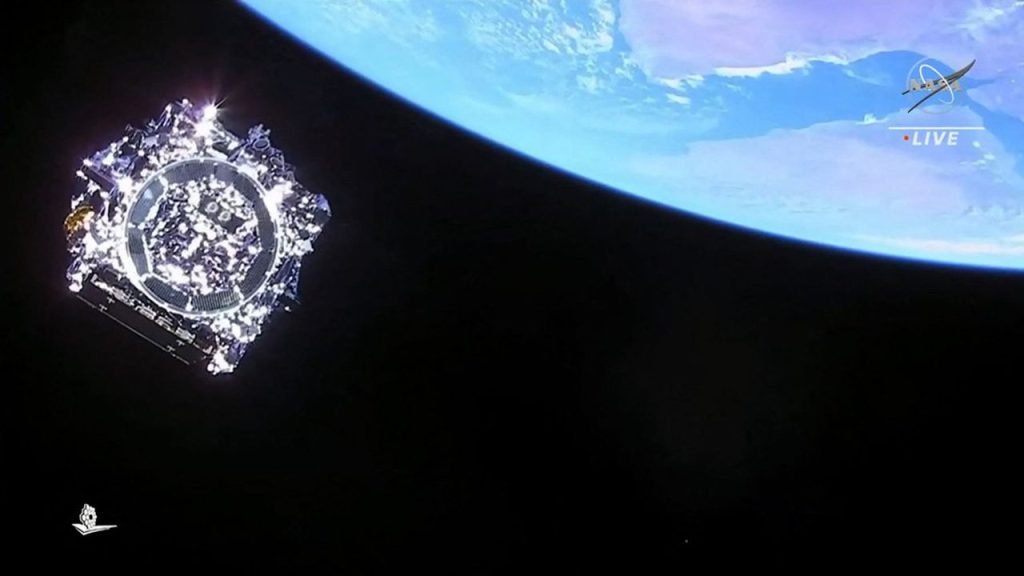
Space: James Webb Telescope makes a big new discovery
James Webb reveals a new secret. The powerful space telescope, which was launched into space last December, for the first time detected the presence of carbon dioxide in the atmosphere of an exoplanet – a planet outside our solar system. A major discovery once again demonstrates the power of this telescope that, in July, provided extraordinary images of galaxies that formed shortly after the Big Bang.
Located 700 light-years away, the observed planet, called “WASP-39 b”, was discovered in 2011. About a quarter of the mass of Jupiter, it is very close to the Sun. WASP-39 b passes very regularly (it orbits within four days), and its atmosphere is stretched.
“a special moment”
For his observations, James Webb used the transit method: when the planet passed in front of its star, it picked up the tiny contrast in the resulting luminosity. Then he analyzed the “filtered” light through the planet’s atmosphere. Various molecules present in the atmosphere leave specific signatures that make it possible to determine their composition.
James Webb’s predecessors, the Hubble and Spitzer telescopes, detected water vapor, sodium and potassium in the atmosphere of this planet. But James Webb was able to go even further thanks to his extraordinary sensitivity to infrared radiation.
If life as we know it is impossible on WASP-39 b, this finding supports the idea that such observations can also be made on rocky planets, with the ultimate goal of determining if one of them provides favorable conditions for life. “This first result provides important information about planet formation and formation, and bodes well for the Webb Telescope’s ability to detect and measure carbon dioxide in the thinner atmospheres of small, rocky planets,” the National Center for Scientific Research says in a press release.
“My first reaction: Wow, we really do have a chance to discover the atmospheres of Earth-sized planets,” astrophysics professor Natalie Batalha of the University of California, Santa Cruz said excitedly on Twitter. “It was a special moment, a milestone in exoplanet science,” a NASA statement quoted Zafar Rostomkulov of Johns Hopkins University as saying.
Go back in time
The US space agency and its European and Canadian partners are pinning high hopes on James Webb, a $10 billion engineering jewel. One of its main tasks is to explore the early ages of the universe thanks to its ability to capture light emitted from very distant sources. In astronomy, seeing far is equivalent to going back in time, as the observed light has traveled for billions of years before reaching us.
The first image captured by this ultra-powerful telescope, provided by NASA on July 12, shows that galaxies formed more than 13 billion years ago. A colorful and highly detailed photo that impressed even US President Joe Biden, who called the day “historic”.
video. James Webb Telescope reveals stunning images of Jupiter
with AFP

“Organizer. Social media geek. General communicator. Bacon scholar. Proud pop culture trailblazer.”
